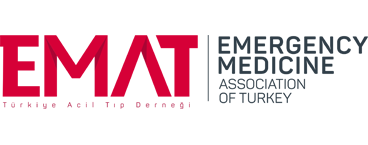Comparison of dental force applied during endotracheal intubation with hyper‑angulated and macintosh‑type video laryngoscopy blades used by emergency medicine trainees: A randomized cross‑over manikin study
Ali Rıza Karabacak1 , İbrahim Ulaş Özturan1,2
, İbrahim Ulaş Özturan1,2 , Ömer Faruk Şefoğlu1
, Ömer Faruk Şefoğlu1 ,
Nurettin Özgür Doğan1
,
Nurettin Özgür Doğan1 , Elif Yaka1
, Elif Yaka1 , Serkan Yılmaz1
, Serkan Yılmaz1 , Murat Pekdemir1
, Murat Pekdemir1
1Department of Emergency Medicine, Faculty of Medicine, Kocaeli University, Kocaeli, Türkiye
2Department of Medical Education, Institute of Health Sciences, Acibadem University, Istanbul, Türkiye
Keywords: Airway management, emergency department, intratracheal, intubation, laryngoscopy
Abstract
OBJECTIVES: This study aimed to compare the effects of Macintosh type and hyperangulated video laryngoscopy (VL) blades on dental force during endotracheal intubation (ETI) using Glidescope and McGrath VL devices.
METHODS: In this randomized, crossover, manikin study conducted at a university emergency medicine (EM) program, 65 EM trainees included interns and residents performed 520 intubations using four different VL blades (GlideScope VL with Macintosh type Mac T3 and hyperangular Lo Pro T3 blades and McGrath VL Macintosh type MAC 4 and hyperangular McGrath X3 blades) in normal and difficult airway scenarios. The primary outcome of this study was the dental pressure (Newton) exerted during ETI. The secondary outcomes included c spine motion (degree), intubation success (%), duration (seconds), successful glottic view (%), and intubator comfort (7 point Likert).
RESULTS: Significant differences were observed in dental force (H(3) = 11.7, P = 0.008), c spine motion (H(3) = 8.34, P = 0.039), duration (H(3) = 16.56, P = 0.001), and comfort (H(3) = 174.96, P < 0.001) across blade types. Glidescope LoPro T3 provided a significant lower dental force (adjusted P = 0.01), less c spine motion (adjusted P = 0.031), and shorter intubation duration (adj P < 0.01) than the McGrath Mac 4. First attempt success and intubator comfort were significantly better with all Glidescope blades (z score of 3.7 and 4.7) than with McGrath blades (z score of 4.1 and 4.4).
CONCLUSION: The Glidescope LoPro T3 blade demonstrated advantages in dental force, c spine motion, and intubation duration compared with McGrath Mac 4. Overall, the Glidescope blades provided superior comfort and higher first attempt success rates.
How to cite this article: Karabacak AR, Özturan İU, Şefoğlu ÖF, Doğan NÖ, Yaka E, Yılmaz S, et al. Comparison of dental force applied during endotracheal intubation with hyper-angulated and macintosh-type video laryngoscopy blades used by emergency medicine trainees: Arandomized, cross-over manikin study. Turk J Emerg Med 2024;24:151-7.
Institutional review board approval was obtained for this study (Kocaeli University Non-Interventional Clinical Research Ethics Committee, Kocaeli – Turkiye, KÜ GOKAEK 2023/08.32, May 4, 2023).
ARK: Conceptualization, methodology, investigation, Writing - Original Draft, Review and Editing, İUÖ: Conceptualization (lead), methodology (lead), formal analysis, investigation, Writing - Original Draft, Review and Editing, Supervision, Project administration, ÖFŞ: Conceptualization, methodology, investigation, data curation, NÖD: Conceptualization, methodology, formal analysis, Review and Editing, EY: Conceptualization, methodology, formal analysis, Review and Editing, SY: Conceptualization, methodology, formal analysis, Review and Editing, MP: Conceptualization, methodology, formal analysis, Review and Editing.
None Declared.
Yigit Saglik Inc. supported this study by providing Glidescope and McGrath VL blades for this study.

